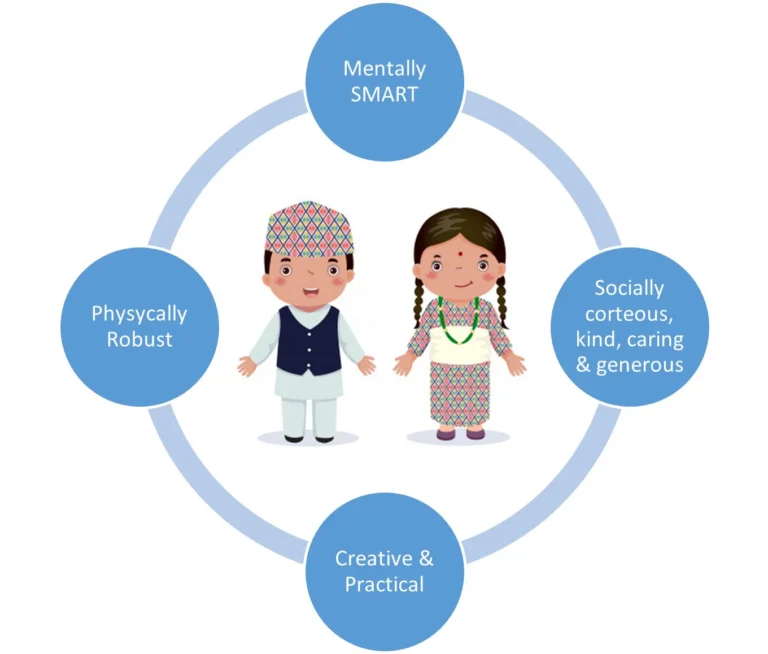
All projects under our Children’s Development Programs are designed based on the four guiding principles of the UN Child Right Convention (CRC) 1989
Nepal being one of the poorest countries with over one-fourth population living under poverty line; child rights are often overlooked. Instead of sending children to school, parents rather make their children do household chores.
The two main reason for this is poverty and lack of awareness. And in rural communities, when children are barely a teenager they are forced into marriage. Uneducated and unaware, these children lack the skills they require to sustain a healthy life.
Many children end up on streets begging while significant number of them are sold abroad either into labour or sex trade. Children by nature, are the most vulnerable section of population in Nepal always at a constant threat for survival.
To improve a child’s holistic development – physical, mental, social, emotional and creativity. The programme ensures the basic rights of a child are met. By 2030, VIN aims to educate 100% children and ensure child rights are practised in all its working disadvantaged communities.
VIN’s Children’s Development Programme aligns with the following Sustainable Goals of UN.
Goal 3: Good Health and Well Being
Goal 4: Quality Education
Goal 5: Gender Equality
Goal 10: Reduced inequalities
Goal 16: Peace, Justice and strong institutions
Children’s Development is a major programme of VIN’s approach to holistic and integrated community empowerment. This holistic approach follows the guiding principles of the Convention on the Rights of the Child (1989): the right to Survival, Protection, Development and Participation.
VIN promotes the rights of all children in the community by: providing access to quality education; developing their life-skills and creativity; providing access to basic health services. Gender equality is ensured through the implementing process.
Child rights education is provided to education stakeholders and community people.
We provide sponsorship opportunity for the children who cannot otherwise attend school. We however empower families to enhance their income source so that they do not have to depend on the outsiders to support their children’s education.
Basic infrastructure is very important to ensure quality education. So we also build schools, Classrooms, safe playground, gender friendly toilets, library, computer labs etc.
A total of 35,259 children benefited through Children’s Development Program.
10,630 children benefitted though our School Infrastructure Development (e.g. construction of school, classrooms, safe playground, library, painting) Project.
To know more about Children’s Development in Nepal, please go through the following reports:
NEPAL CHILD LABOUR REPORT based on data drawn from the Nepal Labour Force Survey 2008 – By ILO
Status Of Children Improving: Report – By The Rising Nepal

VIN aims to empower women socially and economically through education, life skills and income generation opportunities. By 2030, VIN aims to benefit at least 80% of the total women in the marginalized communities of the target areas (Kavresthali, Nuwakot and Okhaldhunga).
